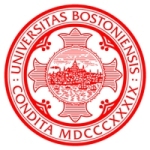Srinivas Sridhar, Northeastern UniversityLeft-handed LightAbstract:We discuss negative refraction at microwave and optical frequencies in 1D and 2D metallic and dielectric photonic crystal media. Here negative refraction is due to the anomalous dispersion characteristics of the medium. In negative index media, the fields and the wavevector obey a left-handed relationship. The experiments show that materials with tailor-made negative or positive refractive indices over broad spectral ranges can be designed and fabricated. We have also demonstrated that negative refraction leads to some novel optical elements for imaging, such as flat lenses and focusing by plano concave lenses. A general theory of imaging by a flat lens without optical axis has been developed, leading to specification of the characteristics required of the flat lens metamaterial. Features of images formed using negatively refracting optical elements, including sub-wavelength resolution, are discussed. Potential applications for imaging and communications at microwave and optical frequencies are discussed. Work supported by the National Science Foundation and the Air Force Research Laboratories, Hanscom. Collaborators: W.T.Lu, P.Vodo, Y.Huang, R.Banyal, D.Casse References1. P. Vodo, W. T. Lu, Y. Huang, and S. Sridhar, "Negative Refraction and Plano-Concave Lens Focusing in One-Dimensional Photonic Crystals", Applied Physics Letters, v. 89, p. 084104, 2006. 2. P. Vodo, P.V. Parimi, W.T. Lu and S. Sridhar, "Focusing by Plano-Concave Lens Using Negative Refraction", Applied Physics Letters, v. 86, p. 201108, 2005. 3. P. Parimi, W.T.Lu, P.Vodo, and S.Sridhar, "Imaging by Flat Lens using Negative Refraction", Nature, v. 426, p. 404, 2003. 4. P. Parimi, W.T. Lu, P. Vodo, J. Sokoloff, and S. Sridhar, "Negative refraction and left-handed electromagnetism in metallic microwave photonic crystals", Physical Review Letters, v. 92, n. 12, p. 127401, 2004. 5. P. Vodo, P. V. Parimi, W. T. Lu, and S. Sridhar, "Microwave photonic crystal with tailor-made negative refractive index", Applied Physics Letters, v. 85, p. 10, 2004. BiographySrinivas Sridhar is Vice Provost for Research, and Arts and Sciences Distinguished Professor of Physics at Northeastern University. He is the Director of Nanomedicine Science and Technology, an IGERT (Integrative Graduate Education and Research Training) program funded by the National Cancer Institute and the National Science Foundation. He is the founding director of the Electronic Materials Research Institute and a leading nanomedicine and nanophotonics researcher. His paper published in Nature in 2003 was selected among the Breakthroughs of 2003 by the journal Science. He has published more than 130 journal articles in prestigious journals including Nature, Physical Review Letters, Applied Physics Letters, and others. He has presented more than 180 invited talks in 15 countries, co-organized 10 conferences and co-edited two conference proceedings. He has served as referee for 12 professional journals and is a frequent proposal reviewer for federal and other funding agencies, including the National Science Foundation, Department of Energy, Department of Defense, American Chemical Society and many others. As Vice Provost for Research, Professor Sridhar administers and promotes Northeastern University’s research program, and develops new inter-disciplinary research and education programs and clusters of excellence.
|
|||||



